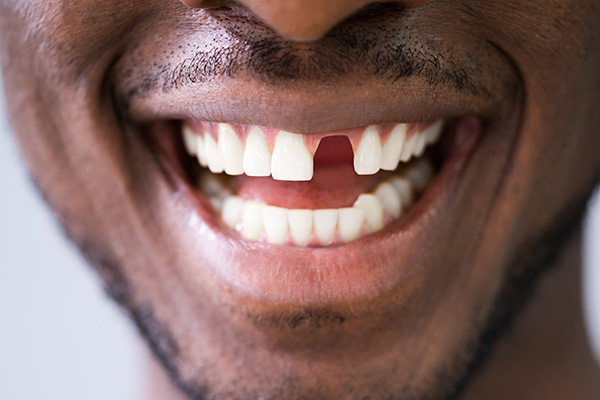A general dentist will try and save natural teeth when possible. However, in certain circumstances, is either the only option or the most appropriate one for preserving oral health. The following are some key examples of situations where a dentist might recommend a tooth extraction.
Reasons for tooth extraction
Sometimes, a tooth is too damaged or decayed to save, or it is coming in or has come in in such a way that it jeopardizes surrounding teeth or smile alignment.
Overcrowding
Overcrowding in the mouth can make it difficult for the smile to come into a healthy alignment. Sometimes, a dentist will suggest removing a tooth to create more room in the mouth for the other teeth to line up evenly with each other. This type of extraction is often performed as part of a patient's orthodontic plan, typically when they are a child or teenager. Well-aligned teeth can also help to prevent dental trauma and tooth decay, two other common reasons for tooth extraction.
Dental trauma
Sometimes, a tooth sustains enough damage that a dental crown or other restoration is not enough. Tooth extraction may be the only option if the tooth root structure and nerves are damaged. For example, if a tooth is cracked and the crack extends below the gum line, a dentist will likely recommend pulling the tooth and discussing tooth replacement options with the patient.
Impacted teeth
This condition often happens with wisdom teeth and can be aggravated by overcrowding. Wisdom teeth are up to four molars that typically erupt between ages 17 and 25. Often, there is not enough room in the mouth or jaw for these teeth. Instead, these wisdom teeth become impacted and do not erupt properly. This condition can lead to several oral health problems, including gum and jaw pain, headaches, infection, and bad breath.
Severe decay
What starts as a small cavity can lead to severe tooth decay that threatens the surrounding healthy teeth and tissue. This cause is perhaps the most preventable, but tooth decay can get so bad that the tooth cannot be saved and has to be pulled. Regular brushing, flossing, and dental checkups may help patients prevent tooth decay from reaching this point. Treating a cavity while it is still in the enamel layer is also recommended.
Advanced periodontal disease
In the advanced stages of gum disease, the gums recede, teeth and gums become infected, and bone loss occurs. At this point, teeth become loose and may fall out. When this happens, a dentist will likely recommend pulling these teeth to help stop the spread of the infection to other parts of the mouth or body. The good news is that, like with tooth decay, regular home dental care and dental visits usually prevent gum disease from advancing this far.
Protect your oral health
Dentistry on Park, LLC provides comprehensive dental care to help patients keep their smiles healthy. We provide various preventive and restorative services in Stoughton and the surrounding area. Call our team today to learn more.
or call Dentistry on Park, LLC at 781-443-8131 for an appointment in our Stoughton office.
Recent Posts
A general dentist will typically only recommend pulling a tooth when absolutely necessary. This procedure, also known as tooth extraction, is reserved for teeth that have been decayed or damaged beyond repair. Not only does this prevent a problem tooth from starting a domino effect of oral health issues, but it also brings several other…
There are two types of tooth extractions: simple and surgical. Simple extractions are for teeth that are entirely exposed and can be accessed above the gumline. Surgical extractions require an incision into the gumline or connective tissue. The type a patient needs depends on the cause and state of the tooth. Here are six reasons…
When people hear the word tooth extraction, they often think of the potential discomfort it may cause. However, a key goal of tooth extraction is quite the opposite. Here is a closer look at tooth extraction and how it helps reduce dental pain.A dentist does not recommend a tooth extraction unless it is necessary. Their…


